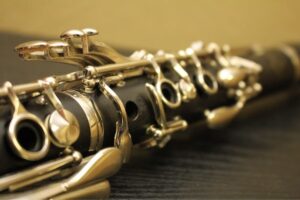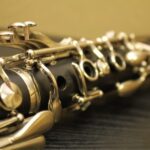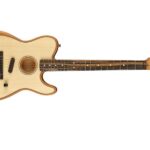The Oboe appeared on the horizon of music in the 17th century. Renowned for their classical touch in music, Oboes have a rich history of gracing many musical compositions.

However, a common yet frustrating problem associated with them is their excessive sharpness.
This excessive sharpness curtails the musician’s ability to produce in-tune notes, leading to an unsatisfied musical experience. Various factors can be the reason for this sharpness.
However, by recognizing and understanding these multiple factors, oboe players can take proactive steps to mitigate sharpness and achieve better intonation.
Thus this article aims to delve into the reasons contributing to the oboe’s tendency to play sharp and how to address them effectively.
Join us as we delve into the reasons behind the oboe’s sharpness and explore effective solutions to address this common issue.
Contents
Reasons Why Oboe Plays Sharp
Quality sound production from Oboe requires exceptional skills and good control over the instrument.
However, the instrument sometimes can exhibit issues with intonation, making the notes sound sharp. This sharpness includes factors related to reed, instrument, and player.
Encountering these issues can be a frustrating experience for musicians. Fortunately, several effective techniques and solutions can help address this problem.
Below is a detailed discussion of these factors and their solutions, so you can better understand and take the necessary steps to eliminate this sharpness.
Reed Related Factors
Playing sharp is the hallmark problem with reed construction and adjustment. Reed that is too open or with improper balance causes the production of sharp sound.
Other factors like tip opening, length and thickness of blades, and overall shape can also contribute to determining the sound pitch.
Being a beginner, it takes time to develop a focused air stream. In such cases, inadequate reed adjustment leads to unresponsive and resistant reed that ultimately causes sharpness.
Furthermore, your Oboe’s reed-making material and quality impact Oboe’s pitch production.
Oboe’s reed usually comes with two types of canes that are French and American. Both canes have different characteristics that respond differently to sound production.
Additionally, the moisture level of the reed is an important barometer to gauge the sound quality of the Oboe.
Reed with high moisture content becomes too soft, eventually producing flat notes. Contrary to this, dry reeds raise the sound pitch, resulting in sharpness.
Addressing Reed Issues
Reed is the fundamental part of an oboe and affects its tone, pitch, and overall performance.
When dealing with the oboe’s sharpness issue, considering reed-related factors is important.
Below are some effective solutions to common reed problems that can cause oboe sharpness.
Reed Adjustment
Reed is undoubtedly the most important part of an Oboe. Small modifications in reed’s tip openings, blade sharpness, and overall balance can offer effective control over pitch.
Techniques such as scraping, balancing the blades, or adjusting the opening can be employed to fine-tune the reed and achieve optimal intonation.
Selecting and Maintaining the Suitable Reed
Reed material impact’s oboe’s pitch. Thus it’s important to check various factors of cane that include density, thickness, and flexibility for a more centered and in-tuned sound.
In this case, it is recommended to seek guidance from experienced oboists.
Additionally, regular maintenance plays a significant role in preventing sharpness issues caused by deteriorating reeds.
Over time, reeds can become worn out, resulting in changes in pitch and responsiveness.
To extend the life of your reeds and maintain consistent performance, consider the following tips:
- Rotate between multiple reeds to allow each one to rest and recover its original shape.
- Store your reeds properly in a protective case to prevent warping or damage.
- Inspect your reeds regularly for any signs of wear, such as cracks or frayed edges.
- Replace damaged reeds promptly. Use reed tools like a reed knife or sandpaper to make minor adjustments and prolong the lifespan of your reeds.
Controlling Reed Moisture
The optimum moisture level of the reed is a crucial preamble for perfect oboe sound production. Too much or too little moisture can cause pitch fluctuations.
However, the dry pitch is a more common issue with reeds. For this, it is recommended to soak the reed in water for 2-3 minutes.
Soaking more than this can leach important reed components shortening its lifespan.
Additionally, to maintain optimum reed moisture levels, it is recommended to store them in proper cases.
Instrument Related Factors

Addressing instrument-related factors is vital for effectively mitigating the oboe’s sharpness. Below is the detail of such factors that require attention.
Oboe’s Design and Construction
Design and construction are important in defining Oboe’s pitch. Factors such as the bore’s length and diameter, the tone holes’ shape, and the keys’ placement can influence the instrument’s pitch.
The narrower or shorter the bore of an oboe, the sharper the pitch will be. Thus it requires special adjustments for perfect tone production.
Issues with Keys
The 45 Oboe keys are fundamental in sound production. Thus, misaligned, unproperly sealed, and poorly adjusted keys can make the notes play sharp.
Furthermore, Issues with spring tension, regulation, or worn-out pads can also affect the overall intonation of the instrument.
Air Leaks from the Instrument
Air is the primary medium that produces sound in Oboe.
Air leaks from cracks in the instrument, loose joint fittings, and keyholes can interrupt the air column and leads to unstable intonation and sharper pitch.
Addressing Instrument Issues
Proper maintenance is crucial for the effective working of any musical instrument, and oboes are not an exception.
This not only helps in ensuring optimal performance and pitch control but also helps in boosting their shelf life.
Below are some important points regarding instrument maintenance that oboists can address to eliminate sharpness and improve sound production.
Check for Key Work
Oboe’s key work mechanisms can cause sharpness. Thus, regularly checking for misaligned keys, loose screws, or malfunctioning mechanisms is important.
Over time, key work can become misadjusted, affecting the overall seal and tone production.
Check if the key work is aligned correctly and make any necessary adjustments to ensure optimal key closure and air tightness.
Evaluating Tone Holes
Tone holes can affect the pitch and intonation of the oboe. Worn tone holes or debris cause variations in pitch, leading to sharpness.
Evaluate worn tone holes and clean the accumulated dust and debris to ensure consistent intonation.
Assess the Octave Key System
A misadjusted or malfunctioning octave key system can cause Oboe to play sharp. Verify that the octave key is sealing properly and that the mechanism operates smoothly.
Considering Tone and Bore Quality
Bore and keyholes are primary sources of sound production in the oboe. Thus ensure that they are properly aligned and airflow is smooth.
Regularly clean and maintain the bore to remove any moisture, dirt, or residue buildup. Also, consult a technician for periodic inspections and adjustments to ensure optimal tone quality and intonation.
Seeking Professional Instrument Repair
If the oboe exhibits persistent sharpness issues despite maintenance and adjustments, it may require professional instrument repair.
In such cases, it is recommended to ask an experienced oboe technician for assistance to diagnose and rectify more complex problems that may affect pitch.
Musician Related Factors
Besides the reed and instrument, oboists can also be a reason for sharp pitch. Oboists-related factors include embouchure, breath control, posture, and hand positions.
Improper Embouchure
Embouchure is the lips and oral cavity formations for effective airflow through the oboe.
Improper embouchure formations result in excessive air pressure that eventually produces sharp pitches.
Posture and Hand Position
The oboist’s posture and hand position greatly influences the pitch produced by the oboe, and a study published in Frontiers in Psychology is a vital testament to this.
An improper posture that includes slouching or tension in the upper body affects the oboist’s control over pitch. This results in eventual sharpness in pitch.
Lack of Ear Training and Intonation Awareness

Another musician-related factor that adds to Obeo’s sharp pitch is the lack of ear training and intonation awareness.
Oboists require special hearing training that helps them detect issues with pitch.
Without proper intonation awareness, oboists may be unable to adjust their playing to achieve the desired pitch accuracy.
Resolving Musician-Related Issues
While reed and instrument-related factors play a significant role in oboe sharpness issues, it is essential to consider the musician’s technique and approach to playing.
Below are some important considerations to resolve musician-related issues that can contribute to sharpness problems on the oboe.
Developing Embouchure Techniques
Unlike other instruments involving reeds, the oboe embouchure requires specialized techniques.
In cases where jaws become rigid or collapse, this ends in sharpening the pitch.
Thus this requires a strong lips grip around the reed without tooth contact, and the jaws should be wide open to achieve the greatest resonance and tone projection levels.
Lip and Jaw Tension
Excessive tension in the lips and jaw can cause sharpness on the oboe. Monitor your playing technique and be mindful of any unnecessary tension in these areas.
Relax your lips and jaw while maintaining proper embouchure formation.
Regularly check for signs of tension and consciously release any tightness to achieve a more resonant and in-tune sound.
Intonation Awareness and Practice
Developing a keen sense of intonation and actively practicing intonation exercises are crucial for overcoming sharpness problems.
Take the time to play with a tuner and regularly check your pitch accuracy.
Work on adjusting your embouchure and fingerings to achieve the correct pitch for each note.
Incorporate intonation exercises into your practice routine to strengthen your ability to play in tune consistently.
Articulation Techniques
The way you articulate the notes on the oboe can impact the pitch and sharpness.
Pay attention to your tonguing technique and ensure that you are using a clean and precise articulation.
Avoid excessive tongue pressure or abrupt attacks, as these can lead to sharpness.
Practice various articulation exercises to refine your technique and achieve accurate pitch control.
Managing Airspeed
Consistent levels of airspeed are necessary for in-tune sound production.
First, ensure that breaths are effective and efficient. While inhaling, take advantage of intercostal muscles to store maximum air inside.
Besides this, the tongue can also be an effective aid in boosting airspeed.
Given the situation, if your embouchure is perfect, the tongue muscles can get back about half the throat.
This has a significant impact on airspeed and, eventually, on tone and pitch.
The Bottom Line
Oboe sharpness issues are common and can be curtailed with little effort. But it’s crucial to understand the root cause of sharpness and how the cause can be effectively addressed.
The article has covered various reed-related, instrument-related, and player-related causes for pitch sharpness and provides effective solutions.
However, a proactive approach is required to ensure optimal performance and pitch control.
By combining effective remedial approaches, oboists can overcome sharpness issues, achieve accurate intonation, and experience greater control and satisfaction while playing the oboe.






